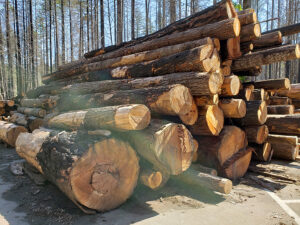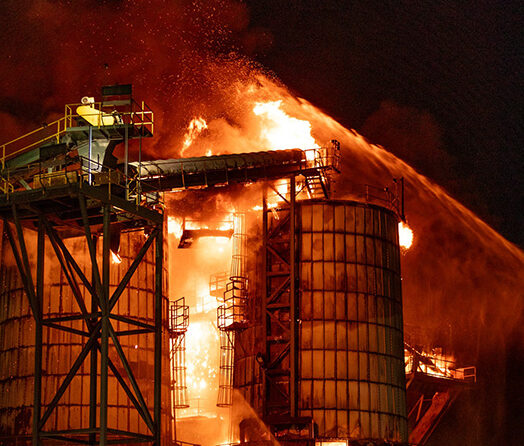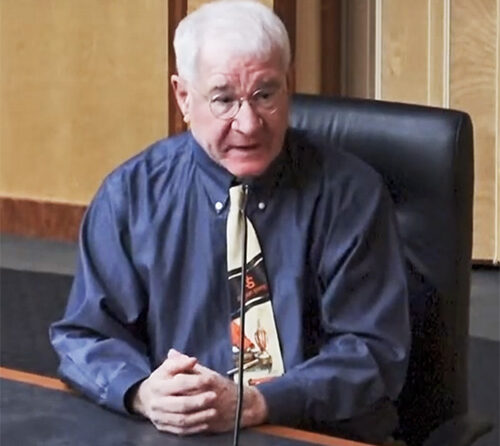Reporter for The Canyon Weekly
It’s an unprecedented opportunity. Six Marion County parks that were badly damaged by the 2020 Santiam Canyon wildfires have been the subject of an intense recovery project, led by county officials and consultants.
Now, the plan is just about ready for prime time, and a date with the Board of Commissioners, who will pass final judgment later this fall on the initiative that might wind up costing up to $24 million in the next 10 years or so.
The county’s parks commission received a final draft of a report Sept. 15 from its consultants, led by Walker Macy and ECO Northwest. Top parks planner Tom Kissinger, took a reporter on a tour of the three sites in the North Fork area on Sept. 23.
“When I look at this project,” Kissinger said, “I look at it as a 50-year project. When you are working in parks you are usually looking at a 10-year window. Even if we manage it well, it might well be 100 years before things look the way they did before.”
By “look” Kissinger meant the landscape, which remains dominated by blackened – but regenerating – trees and wide meadows where forests used to be. All of the hazardous trees are down, and the county and its federal partners with the Bureau of Land Management and the U.S. Army Corps of Engineers continue to work their list of piles that still need to be removed.
“It was a tragedy,” said Kissinger of the fires, “but it’s also a huge opportunity, a once in a generation opportunity. You don’t usually build things this way. It’s unique.”
A grant from Oregon Forests Forever will allow the county to plant 342,000 replacement trees. That work will begin this winter and continue in subsequent winters, with community volunteer planting parties planned.
Marion County hopes to restore sensitive natural areas, rid the parks of non-native species, preserve wetlands and riparian corridors and build a culture of environmental education and nature interpretation in the six parks. That’s the restoration piece.
Recreationally, the project also aims to improve river access, rebuild entrance roads and parking lots and add campgrounds and RV sites and yurts. Parks officials think that their counterparts in Linn County have done an admirable job of providing overnight amenities to its parks. More camping, the consultants and county officials say, fits better with what the parks user of the 2020s wants. And more camping also would provide revenue aimed at helping the county execute the plan and preserve the system’s resources.
Here is a park-by-park summary of the plan. We’ll look at the Highway 22 parks first and then the three in the North Fork area, which was hit harder and will take more time to be put back together.

Packsaddle: This park already is open, although its main utility right now is to keep in place its status as a put-in, put-out stop for rafters and kayakers. Key recreation goals include an improved driveway, improved parking, a picnic shelter, more access points to the North Santiam River and improvements to the boat ramp.
Restoration goals include restoring tributary riparian zones, engineering log jams in the tributaries and at the boat ramp, install bird and/or bat boxes on platforms and add vegetation.
Minto: The largest of the 6 parks at 70 acres, Minto will be the next to open, with only some salvage log removals standing in the way. Kissinger said parks officials are hoping for a “soft launch” this winter.
Recreation goals include improved access and driveways, a new restroom and picnic areas, river access, trail upgrades and a road crossing.
Restoration goals include log jams, restoring the floodplain riparian zone and wetlands, bird and/or bat boxes plus revegetation.
Niagara: Recreational goals here include a new restroom, improved parking and access, a buffer area, picnic areas, interpretive signs and a kiosk, river access, a footbridge and road crossings.
Restoration goals include a native plants meadow, restored tributary and riparian zones, wetlands work, revegetation and bird/bat boxes.
North Fork: Its wide expanse of river access at a severe bend in the Little North Santiam makes it the most visited of the six parks.
“This was a black gooey mess,” Kissinger noted while looking down at the beach from the bluff above. He also noted that parks officials and the consultants have found sets of stone steps that had been “lost to time” until the fires burned away the vegetation that had overgrown them.
Recreational goals include better road access, expanded parking, adding a host site and a new restroom, building a camping area and picnic shelters and better river access.
Recreational goals include log jams, floodplain/riparian zone restoration, restoring an existing tributary and riparian zone and bird/bat boxes and revegetation.
Bear Creek: Parks officials and the consultants hope to make this site the destination for campers. The property sits between North Fork Road and the Little North Santiam and “because it is nice and flat it will be easier to develop,” Kissinger said. “It’s already designed the way we want it.”
Marion County also hopes to work with the Bureau of Land Management on a lease of property east of Bear Creek that could be used for more camping sites.
Kissinger said the park suffered 90 percent tree loss and shade will be a key challenge.
“This became a very sunny place all of a sudden,” Kissinger said.
Salvage logs already have been reduced to piles of chips for trails and walkways and more logs will be used for beams and shelters.
Recreational goals include picnic shelters, increased tent and RV camping, river access, buffer areas and new restrooms. Restoration goals include wetlands work, vegetative buffers between campsites, other revegetation and bird/bat boxes.
Salmon Falls: Behind the falls Kissinger says the overflow parking lot was rarely used.
“This is a really good flat space,” he said. “You can punch a campground right in here. I’d love to do yurts here. This could be a really cool campground.”
Further to the east is a nice pool in the river, again, a spot Kissinger said park visitors were seldom aware of.
When you turn around and look back toward the main parking lot from the rocks in the river at top of the falls you get disoriented. There used to be kind of a peek-a-boo effect with regard to sightlines. Now, all the trees are gone.
Recreational goals for Salmon Falls are picnic shelters, a buffer area, an amphitheater, camping, river access and a falls overlook plus trails and a boardwalk through a wetland.
Restoration goals include restoring tributaries and their riparian zones, including wetlands, plus vegative buffers between campsites, other revegetation and bird/bat boxes.
Outreach, funding
Marion County park planner Tom Kissinger said the county will take its recovery plan on the road for outreach meetings, perhaps in Gates, Lyons and/or Detroit and also organize online marketing and surveying.
“This is what we think,” Kissinger said, “but we have to introduce it to the community and ask “is this what you think?”
The $24 million question is how to pay for it all. The county has spent approximately $100,000 on the planning and consulting work. The Federal Emergency Management Agency (FEMA) has provided $1.2 million, and the county also plans to use its $300,000-plus in annual RV fee allocation from the state and $560,000 in one-time-only salvage timber sales.
The consultants broke down the $24 million on a park-by-park basis. In millions, the report shows that Bear Creek will require $8.6, Salmon Falls $4.8, Niagara $3.8, Minto $2.8, North fork $2.4 and Packsaddle $1.5.
The consultants suggest that Marion County aggressively pursue grant opportunities while also noting that new day-use and parking fees and camping revenue would be in the mix.
A seventh Marion County park in the Canyon, North Santiam, is not part of the restoration plan. The county recently took over operations from the state and although the park did lose quite a bit of trees it will require much less restoration work than the other six. It remains open.






